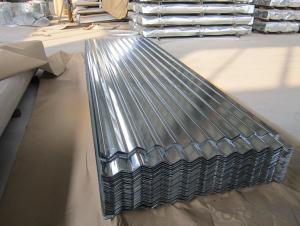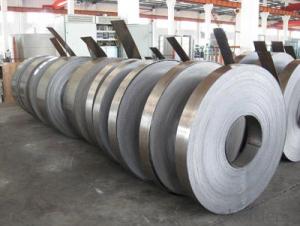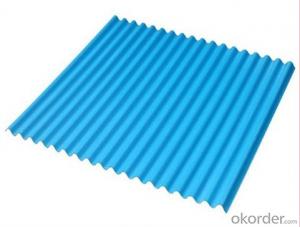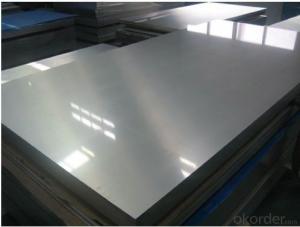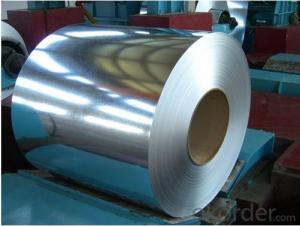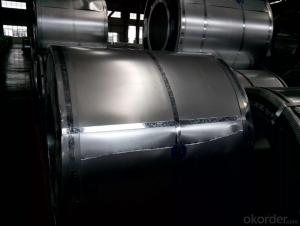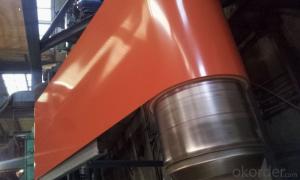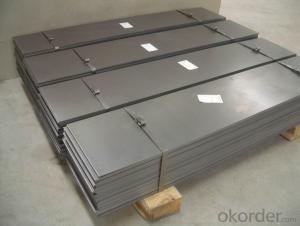Stainless Steel Sheet SS 201/304/316/304L/316L/309S/310S/430
- Loading Port:
- China main port
- Payment Terms:
- TT or LC
- Min Order Qty:
- 50 m.t.
- Supply Capability:
- 1000 m.t./month
OKorder Service Pledge
OKorder Financial Service
You Might Also Like
1.Structure of Stainless Steel Sheet Description
The surface brightness and flatness of no2B is better than no2D. then through a special
surface treatment to improve its mechanical properties,No2B could nearly satisfy comprehensive uses.
2.Main Features of the Stainless Steel Sheet
• Hardness (HB): ≤ 187
• Tensile strength (Mpa): ≥ 520
• Yield strength (Mpa): ≥ 205
• Elongation %: ≥ 40
• Reduction in area %: ≥ 50
• Recommended heat Treatment: 1030 ' C -1180 ' C
3. Stainless Steel Sheet Images
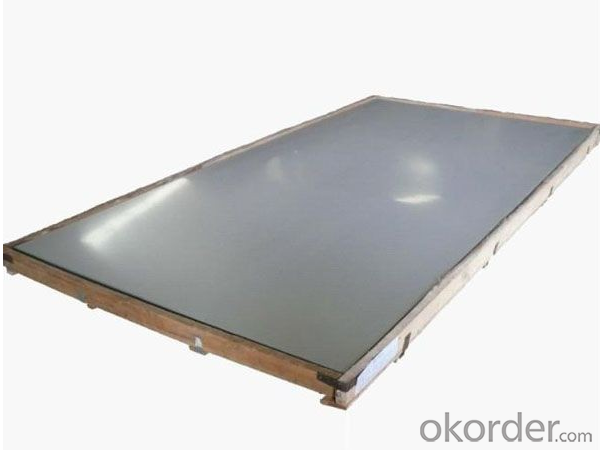
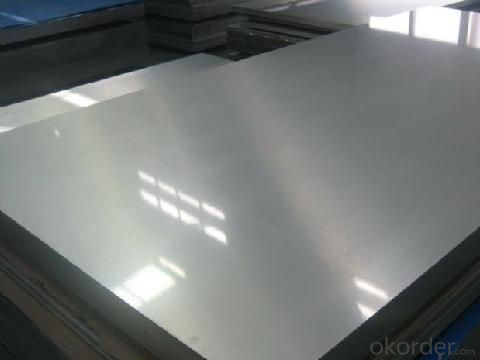
4. Stainless Steel Sheet Specification
| Grade: | 200series.300series. | Standard: | JIS,AISI,ASTM | Length: | as request |
| Thickness: | 0.3-3mm | Width: | 30-2000mm | Place of Origin: | Shanxi China (Mainland) |
| Brand Name: | CNBM | Model Number: | ss201/304/316/304L/316L/309S/310S/430 | Type: | Plate |
| Application: | hardware, foodstuff, manufacture, medic | Certification: | SGS | Item: | ss202/304/316/309s/310/410/420 stainless steel sheet |
| Packaging: | Export standard package or as your requirement | Delivery: | In 15 days | Stock: | Available |
5.FAQ of Stainless Steel Sheet
①Who are you?
We are the manufacturer! We produce stainless steel products
with high quality & very competitive price!Please feel free to
contact us for more information!
②How long can we receive the product after purchase?
In the purchase of product within three working days, We will arrange the factory delivery as soon as possible. The pecific time of receiving is related to the state and position of customers.Commonly 7 to 10 working days can be served.
③How about your company?
A world class manufacturer & supplier of castings forging in Stainless Steel Sheet,is one of the large-scale professional investment casting production bases in China,consisting of both casting foundry forging and machining factory. Annually more than 8000 tons Precision casting and forging parts are exported to markets in Europe,America and Japan. OEM casting and forging service available according to customer’s requirements.
- Q:Can steel strips be used in the production of knives and blades?
- Yes, steel strips can be used in the production of knives and blades. Steel strips provide a strong and durable material that can be shaped and sharpened to create high-quality cutting tools.
- Q:What is the yield strength of steel strips?
- The yield strength of steel strips varies depending on the specific grade and composition of the steel. Generally, steel strips have a yield strength ranging from 30,000 to 100,000 pounds per square inch (psi).
- Q:What gas does the shear of the strip weld require for the welder?
- Welding equipment includes welding machine and welding auxiliary mechanical equipment. According to the way of welding, it can be divided into two kinds of flash welding and welding.
- Q:What are the common painting techniques for steel strips?
- There are several common painting techniques that can be used for steel strips. The most commonly used technique is the spray painting method. This involves using a spray gun to evenly distribute paint onto the surface of the steel strip. This technique is highly efficient and provides a smooth and even finish. Another commonly used technique is brush painting. This involves using a paintbrush to manually apply paint onto the steel strip. Brush painting is often used for smaller areas or intricate designs where precision is required. Electrostatic painting is another popular technique for painting steel strips. This method involves applying an electrostatic charge to the paint particles, which are then attracted to the grounded steel strip. This technique provides a highly uniform and durable finish. Powder coating is also commonly used for steel strips. In this method, a dry powdered paint is applied to the steel strip. The strip is then heated, causing the powder to melt and form a smooth and durable coating. Powder coating is known for its excellent resistance to chipping, scratching, and fading. Lastly, immersion painting is a technique where the steel strip is submerged in a tank of paint. This method is often used for large-scale projects where efficiency is important. The steel strip is completely coated in paint and then removed from the tank to dry. Overall, the choice of painting technique for steel strips depends on various factors such as the size of the project, desired finish, and efficiency requirements. Each technique has its own advantages and can produce high-quality results when used appropriately.
- Q:How are steel strips used in the production of solar panels?
- Steel strips are used in the production of solar panels as a structural component, providing support and stability to the panels. They are typically used as frames or mounting structures to hold the various components of a solar panel together, such as the photovoltaic cells, glass cover, and backsheet. These steel strips ensure the durability and longevity of the solar panels, allowing them to withstand various environmental conditions and securely hold the components in place.
- Q:What are the different grades of steel used for making strips?
- The different grades of steel commonly used for making strips include low carbon steel, high carbon steel, stainless steel, and alloy steel.
- Q:Can steel strips be used in HVAC systems?
- Yes, steel strips can be used in HVAC systems. Steel strips are commonly used for various applications in HVAC systems, such as duct fabrication, support structures, and coil fins. They offer durability, strength, and resistance to corrosion, making them suitable for use in HVAC equipment.
- Q:What are the alloying elements found in steel strips?
- The alloying elements commonly found in steel strips include carbon, manganese, silicon, phosphorus, sulfur, and trace amounts of other elements such as chromium, nickel, and molybdenum.
- Q:How are steel strips used in the production of metal roofing?
- Steel strips are used in the production of metal roofing as they are commonly used as the base material for the roof panels. These strips are cold-rolled and coated with protective layers to enhance durability and resistance to corrosion. They are then formed into roofing panels using various techniques like roll forming or stamping. Steel strips provide strength, stability, and longevity to the final metal roofing product, making it an excellent choice for both residential and commercial applications.
- Q:What are the different types of joints used for steel strips?
- For steel strips, there are various types of joints available depending on the specific application and requirements. The most commonly used joints include: 1. Butt joint: This is the simplest and widely utilized joint for steel strips. It involves aligning the ends of two strips and joining them together through welding or bolting. 2. Lap joint: In this joint, one strip overlaps the other and is subsequently welded or bolted together. This type of joint offers enhanced strength and stability. 3. Scarf joint: A scarf joint is a variant of the lap joint where the overlapping ends are cut at an angle to create a seamless transition between the strips. This joint is often employed when a continuous appearance is desired. 4. T-joint: In a T-joint, one strip is perpendicular to the other, forming a T shape. This joint is commonly used to join steel strips at right angles. 5. Corner joint: Similar to a T-joint, a corner joint involves both strips being at a 45-degree angle, creating a corner. This type of joint is frequently utilized in box or frame structures. 6. Butt joint with backing strip: This joint employs a backing strip placed behind the joint to provide additional support and strength. The backing strip is typically joined to the steel strips through welding or bolting. 7. Overlap joint: In an overlap joint, one strip is positioned over the other with a small gap between them. This joint is commonly found in applications where flexibility is required, such as in conveyor belts. These examples showcase only a few of the available joint options for steel strips. The choice of joint will depend on factors such as strength requirements, the application, and the desired final appearance of the product.
1. Manufacturer Overview |
|
|---|---|
| Location | |
| Year Established | |
| Annual Output Value | |
| Main Markets | |
| Company Certifications | |
2. Manufacturer Certificates |
|
|---|---|
| a) Certification Name | |
| Range | |
| Reference | |
| Validity Period | |
3. Manufacturer Capability |
|
|---|---|
| a)Trade Capacity | |
| Nearest Port | |
| Export Percentage | |
| No.of Employees in Trade Department | |
| Language Spoken: | |
| b)Factory Information | |
| Factory Size: | |
| No. of Production Lines | |
| Contract Manufacturing | |
| Product Price Range | |
Send your message to us
Stainless Steel Sheet SS 201/304/316/304L/316L/309S/310S/430
- Loading Port:
- China main port
- Payment Terms:
- TT or LC
- Min Order Qty:
- 50 m.t.
- Supply Capability:
- 1000 m.t./month
OKorder Service Pledge
OKorder Financial Service
Similar products
New products
Hot products
Hot Searches
Related keywords







